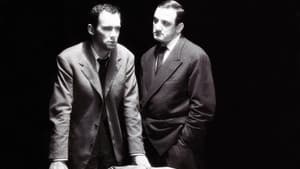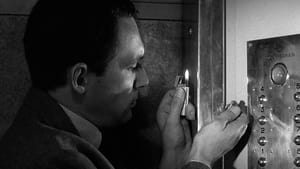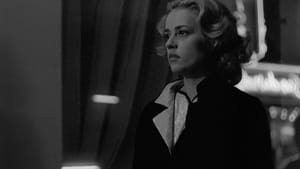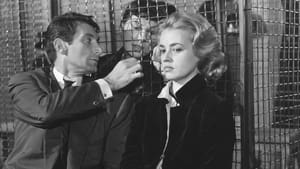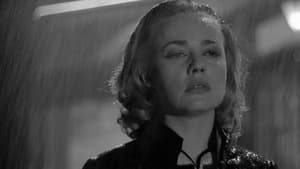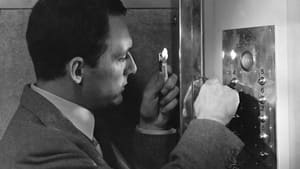Contact: [email protected]
Video Sources 0 Views

Synopsis
Review: “In Elevator to the Gallows” 1958 – A Noir Classic Rediscovered in Color

Introduction
Welcome to the enigmatic world of “In Elevator to the Gallows” 1958, a timeless noir thriller that has captivated audiences for decades. With the recent release of an early colored version, this cinematic gem takes on a new life, inviting viewers to immerse themselves in its atmospheric visuals and gripping narrative. In this comprehensive review, we explore the impact of colorization on the viewing experience of “In Elevator to the Gallows” 1958 and examine its enduring legacy in the realm of classic cinema.
Check The Full Colorized Movies List
Check Our Colorized Movies Trailer Channel
Understanding “In Elevator to the Gallows” 1958: Director, Cast, and Genre
Directed by the visionary Louis Malle, “In Elevator to the Gallows” 1958 is a masterclass in noir filmmaking, characterized by its moody atmosphere and compelling storytelling. Malle’s keen eye for detail and thematic depth elevate the film beyond its genre conventions, establishing it as a seminal work in the history of cinema.
At the heart of the film are the captivating performances of its cast, led by the talented Maurice Ronet and the iconic Jeanne Moreau. Ronet’s portrayal of Julien Tavernier, a man ensnared in a web of deceit and betrayal, is both nuanced and haunting, while Moreau’s portrayal of Florence Carala exudes an intoxicating mix of allure and vulnerability.
Set against the backdrop of post-war Paris, “In Elevator to the Gallows” 1958 navigates the murky waters of love, greed, and moral ambiguity, firmly establishing itself within the noir genre. Malle’s direction infuses the film with a palpable sense of tension, keeping viewers on the edge of their seats from start to finish.
Exploring the World of “In Elevator to the Gallows” 1958: Plot and Characters
“In Elevator to the Gallows” 1958 follows the intertwined fates of Julien Tavernier, Florence Carala, and a pair of star-crossed lovers, Louis and Véronique. When Julien executes a meticulously planned murder of his employer, he finds himself trapped in an elevator, setting off a chain of events that will forever alter the course of their lives.
The film’s intricate plot weaves together themes of love, betrayal, and existential despair, as each character grapples with their own moral dilemmas and desires. Julien’s descent into darkness is juxtaposed with Véronique and Louis’ ill-fated romance, creating a compelling narrative that keeps viewers enthralled until the final frame.
The Art of Film Colorization
Film colorization, the process of adding color to black and white footage, has long been a subject of debate within the film industry. Originally developed as a means of modernizing classic films for contemporary audiences, colorization has since evolved into a nuanced art form, offering filmmakers new possibilities for creative expression.
Early Colored Films: A Brief History
The emergence of early colored films marked a significant turning point in the history of cinema, ushering in a new era of visual storytelling. From hand-tinted frames to Technicolor innovations, the development of colorization techniques revolutionized the way audiences experienced motion pictures, opening up a world of possibilities for filmmakers.
“In Elevator to the Gallows” 1958 and Its Early Colored Version
In a bold move, “In Elevator to the Gallows” 1958 was released in a colorized format, offering audiences a fresh perspective on its atmospheric visuals and evocative cinematography. While purists may balk at the idea of tampering with a classic, the early colored version of the film breathes new life into its iconic imagery, enhancing the viewer’s immersion in the world of post-war Paris.
The Debate Over Film Colorization
The decision to colorize classic films like “In Elevator to the Gallows” 1958 has sparked heated debate among cinephiles and industry professionals alike. While some argue that colorization detracts from the artistic integrity of the original work, others view it as a legitimate means of preserving and revitalizing cinematic heritage for future generations.
Examining “In Elevator to the Gallows” 1958 as an Early Colored Film
As we examine “In Elevator to the Gallows” 1958 in its early colored form, it becomes clear that colorization enhances the film’s visual appeal, enriching its atmospheric setting and nuanced performances. The vibrant hues of post-war Paris spring to life on screen, immersing viewers in a world of shadow and intrigue unlike any other.
Influence and Legacy: “In Elevator to the Gallows” 1958’s Impact on Cinema
Beyond its initial release, “In Elevator to the Gallows” 1958 has left an indelible mark on the cinematic landscape, inspiring countless filmmakers and shaping the evolution of the noir genre. Its influence can be felt in the works of directors like Quentin Tarantino and Martin Scorsese, who have cited the film as a major influence on their own cinematic sensibilities.
Director’s Cinematic Legacy: Beyond “In Elevator to the Gallows” 1958
Louis Malle’s contribution to cinema extends far beyond “In Elevator to the Gallows” 1958, encompassing a diverse body of work that spans multiple genres and themes. His innovative approach to storytelling and visual aesthetics continues to resonate with audiences around the world, cementing his legacy as one of the most influential filmmakers of the 20th century.
Themes Explored in “In Elevator to the Gallows” 1958
At its core, “In Elevator to the Gallows” 1958 explores the timeless themes of love, betrayal, and existential despair, resonating with audiences on a deeply emotional level. Through its evocative imagery and morally complex characters, the film invites viewers to confront the darker aspects of human nature and society, prompting introspection and reflection long after the credits roll.
Reception and Controversy Surrounding “In Elevator to the Gallows” 1958
Upon its release, “In Elevator to the Gallows” 1958 received widespread critical acclaim for its atmospheric visuals and gripping narrative. However, the decision to release the film in a colorized format ignited controversy among purists, who argued against altering its original presentation. Despite the debate, the film’s enduring legacy continues to captivate audiences worldwide, cementing its status as a true classic of the noir genre.
Where to Watch “In Elevator to the Gallows” 1958 Online
For those eager to experience “In Elevator to the Gallows” 1958 in all its cinematic glory, the film is available for streaming on various platforms, ensuring its accessibility to audiences old and new.
FAQs About “In Elevator to the Gallows” 1958
As enthusiasts revisit “In Elevator to the Gallows” 1958, common queries arise regarding its production history, cast, thematic elements, and more. Here, we address some frequently asked questions to provide clarity and insight into the film’s enduring appeal.
Q1: Who directed “In Elevator to the Gallows” 1958? A1: “In Elevator to the Gallows” 1958 was directed by the acclaimed French filmmaker Louis Malle. His visionary direction and unique storytelling style contributed to the film’s enduring legacy.
Q2: What is the significance of the film’s early colored version? A2: The early colored version of “In Elevator to the Gallows” 1958 offers viewers a fresh perspective on its atmospheric visuals and evocative cinematography. While some purists may prefer the original black and white presentation, the colorized version adds a new dimension to the film’s aesthetic appeal.
Q3: Who are the main actors in “In Elevator to the Gallows” 1958? A3: The main actors in “In Elevator to the Gallows” 1958 include Maurice Ronet, Jeanne Moreau, Georges Poujouly, and Yori Bertin. Their compelling performances bring the film’s characters to life and add depth to its narrative.
Q4: What themes are explored in “In Elevator to the Gallows” 1958? A4: “In Elevator to the Gallows” 1958 delves into themes of love, betrayal, existential despair, and moral ambiguity. Through its nuanced storytelling and multi-dimensional characters, the film offers thought-provoking insights into the human condition.
Q5: Is “In Elevator to the Gallows” 1958 available for streaming online? A5: Yes, “In Elevator to the Gallows” 1958 is available for streaming on various platforms, making it easily accessible to audiences around the world. Whether you prefer the original black and white version or the early colored release, you can enjoy this classic noir thriller from the comfort of your own home.
These frequently asked questions provide valuable insight into the production, themes, and availability of “In Elevator to the Gallows” 1958, further enriching the viewing experience for audiences old and new.
Conclusion
In conclusion, “In Elevator to the Gallows” 1958 stands as a testament to the enduring power of cinema, captivating audiences with its timeless tale of love, betrayal, and existential despair. Whether viewed in its original black and white format or early colored version, the film’s artistic merit remains undeniable, showcasing the genius of Louis Malle and the enduring allure of the noir genre. As we reflect on its impact on the cinematic landscape, let us celebrate “In Elevator to the Gallows” 1958 as a true classic that continues to inspire and enthrall audiences around the world.
